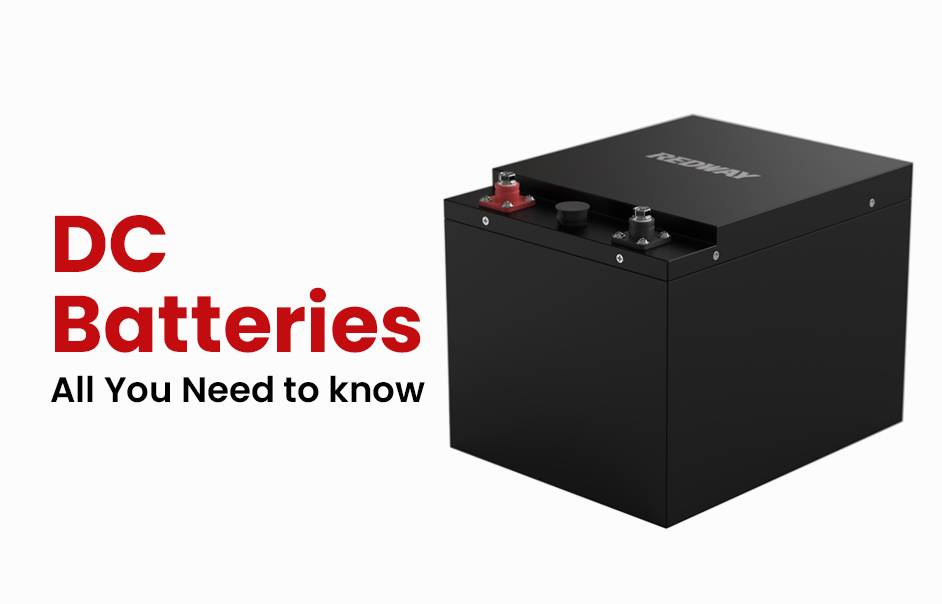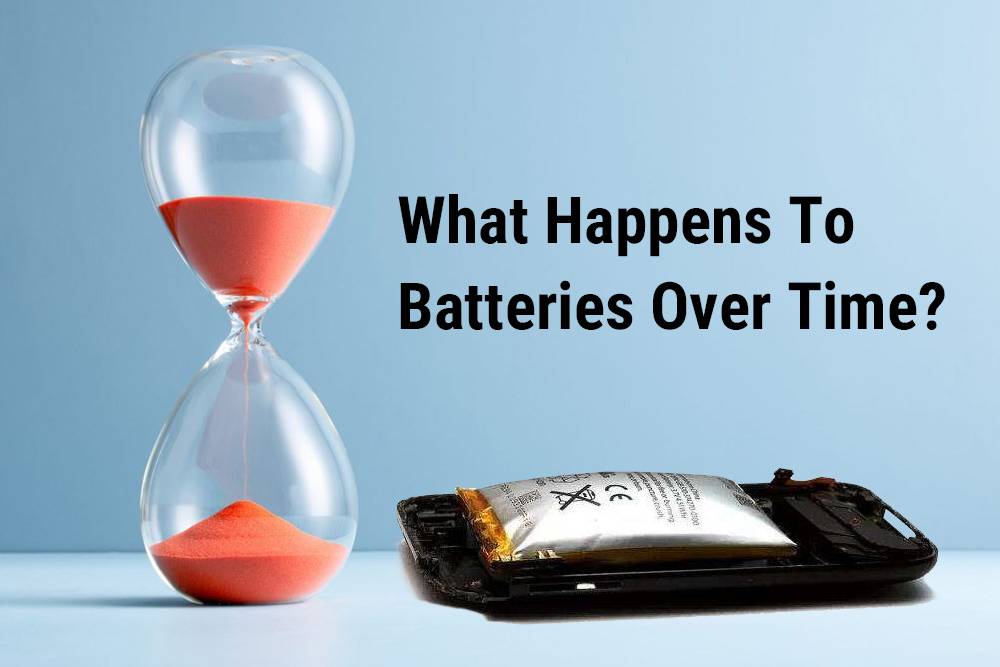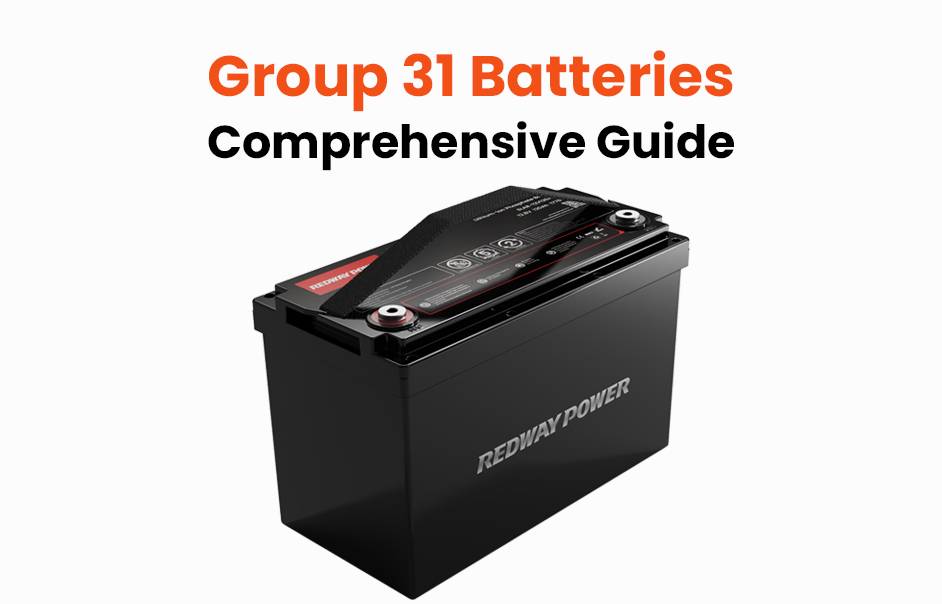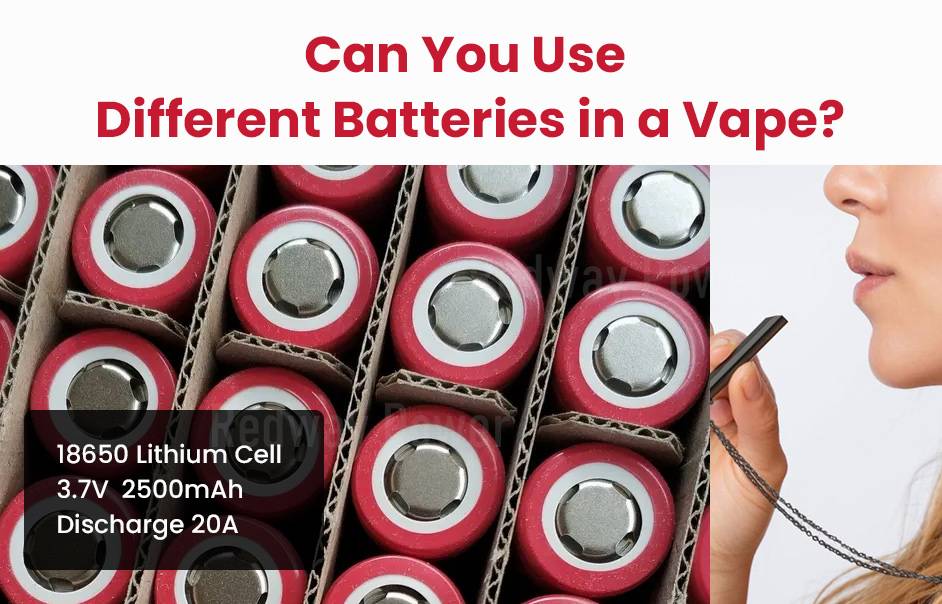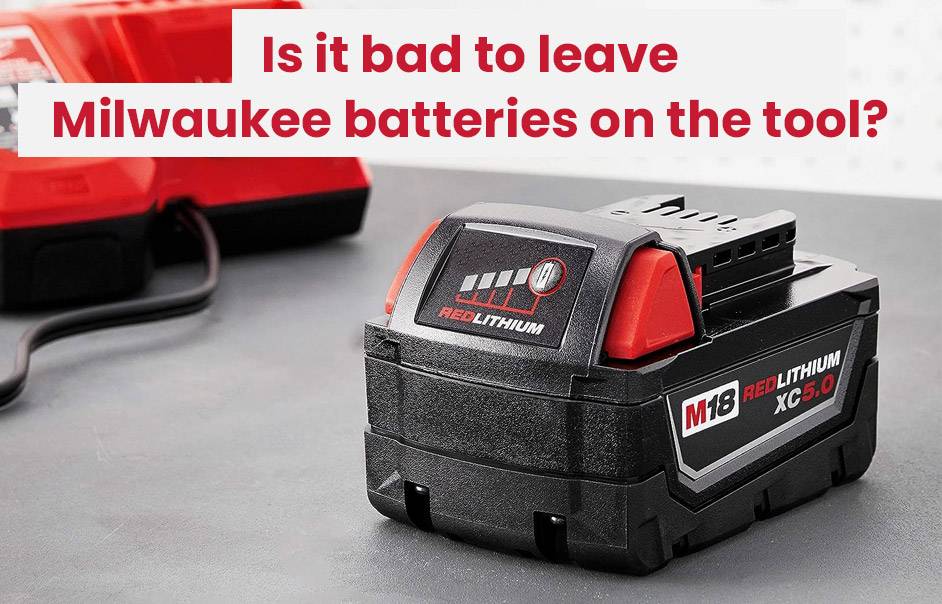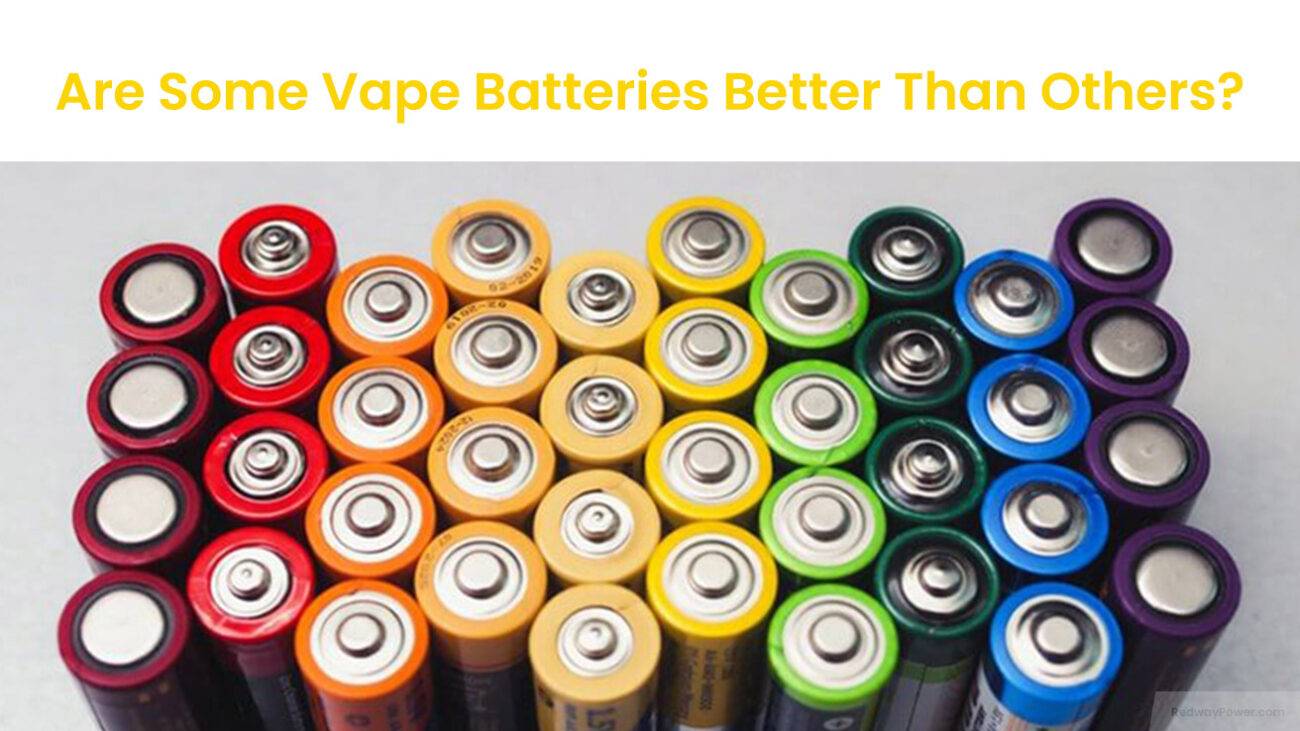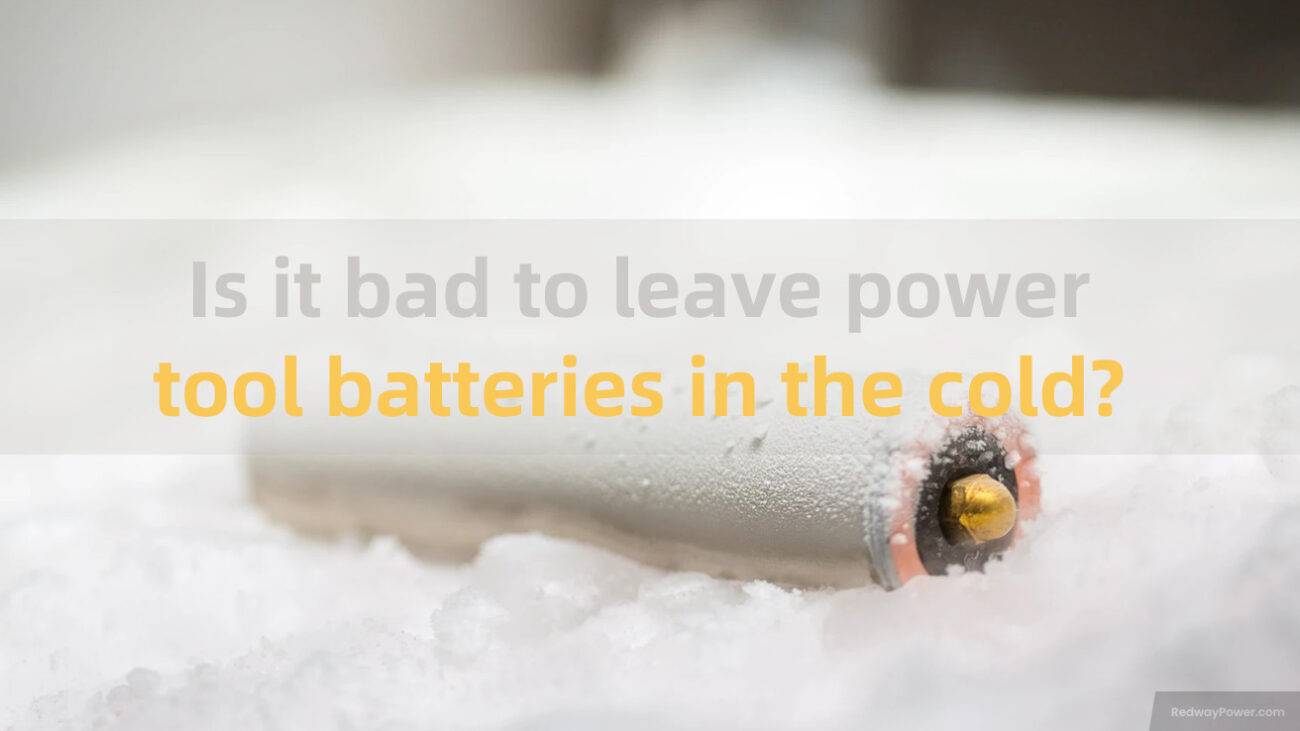Embark on an electrifying exploration of DC batteries in this tech-centric blog. Whether you’re tech-savvy, a DIY enthusiast, or just curious, discover the vital role DC batteries play in our digital era. From smartphones to electric vehicles, these energy-packed wonders power our daily lives. Join us for an illuminating journey into the world of DC batteries, sparking curiosity and recharging your knowledge. Grab your favorite device, fueled by a DC battery, and let’s dive into the fascinating realm of energy storage!
Types of DC Batteries
When it comes to DC batteries, there are various types available on the market. Each type has its own unique characteristics and applications. Let’s take a closer look at some of the most common types of DC batteries:
1. Lead-Acid Batteries:
These are one of the oldest and most widely used types of DC batteries. They are known for their reliability and affordability. Lead-acid batteries are commonly used in automotive applications, backup power systems, and off-grid solar systems.
2. Lithium-ion Batteries:
As technology advances, lithium-ion batteries have become increasingly popular due to their high energy density and long cycle life. They are commonly found in portable electronics such as smartphones, laptops, and electric vehicles.
3. Nickel-Cadmium (NiCd) Batteries:
Although not as common as they once were, NiCd batteries still have their place in certain applications where durability is crucial, such as emergency lighting systems and medical equipment.
4. Nickel-Metal Hydride (NiMH) Batteries:
Similar to NiCd batteries but without the toxic cadmium content, NiMH batteries offer improved capacity compared to traditional alkaline cells. They are often used in cordless phones, digital cameras, and handheld gaming devices.
5. Solid-state Batteries:
This emerging technology holds great promise for the future of battery technology with its potential for higher energy density, faster charging times,and enhanced safety features.
In summary, There is a wide variety of DC battery options available today with each type having its own strengths and weaknesses.
There isn’t necessarily one “best” type; it all depends on your specific needs.
It’s important to consider factors such as cost,ease-of-use,capacity,durability,and environmental impact when choosing a battery.
So whether you’re powering an electric vehicle or running a remote cabin off-grid,it’s essential to choose the right DC battery that will meet your requirements efficiently.
12V DC Battery
How long can a 12V DC battery last?
The lifespan of a 12V DC battery depends on various factors such as usage, maintenance, and quality.
With proper care and regular charging cycles, a well-maintained 12V battery can last anywhere from two to five years.
However, heavy usage or extreme weather conditions can affect its longevity. It’s essential to monitor the battery’s performance regularly to ensure it functions optimally.
Regularly checking the voltage level and ensuring proper ventilation around the battery are crucial steps in prolonging its lifespan.
Remember, taking good care of your 12V DC battery will help maximize its longevity and keep your devices powered up when you need them most!
Can you charge a 12V battery with a DC power supply?
Have you ever wondered if you can charge a 12V battery using a DC power supply? The answer is yes! A 12V battery can be charged with a DC power supply, as long as the voltage and current levels are compatible.
Using a DC power supply to charge your 12V battery can be convenient in certain situations, especially when traditional chargers are not available. However, it’s important to ensure that the voltage output of the power supply matches the requirements of the battery.
When connecting your 12V battery to a DC power supply for charging, make sure to observe safety precautions and follow manufacturer guidelines. Overcharging or using an incompatible power supply could potentially damage the battery or pose safety risks.
Charging a 12V battery with a DC power supply is possible but requires careful attention to detail and adherence to proper charging protocols.
Can I use DC battery while charging?
When it comes to using a 12V DC battery while charging, it’s essential to consider safety measures. While some batteries allow for this practice, it is always recommended to consult the manufacturer’s guidelines.
Using a DC battery while charging can be convenient in certain situations where continuous power supply is needed. However, not all batteries are designed for this dual functionality. It’s crucial to check the specifications of your particular battery before attempting to use it simultaneously.
If you’re unsure whether your 12V DC battery can be used while charging, err on the side of caution and avoid doing so. Charging and discharging a battery at the same time could potentially lead to overheating or other safety hazards.
Always prioritize safety when handling electrical devices like batteries. If uncertain about proper usage, seek guidance from professionals or refer back to the manufacturer’s instructions.
Can I charge a battery directly from the power supply?
Charging a battery directly from the power supply is possible, but it’s essential to use caution. Make sure the voltage and current output of the power supply match the requirements of the battery.
Using an incorrect power supply can lead to overcharging, which can damage or even destroy the battery. It’s crucial to follow manufacturer guidelines for charging to prevent any potential risks.
Before connecting a battery directly to a power supply, ensure that both devices are compatible and that you understand how they work together. Taking these precautions will help maintain your battery’s lifespan and performance in the long run.
If you’re not confident in your ability to safely charge a battery from a power supply, consider seeking advice from a professional or referring to instructional materials provided by the manufacturer.
What happens if you charge a 12V battery too long?
Have you ever wondered what happens if you leave a 12V battery charging for too long? Well, let’s dive into it. Charging a battery beyond its recommended capacity can lead to overcharging. This causes the electrolyte in the battery to heat up excessively, potentially resulting in damage to the internal components.
Overcharging a 12V battery can also lead to increased water loss and produce excess hydrogen gas, which poses safety risks. The excessive pressure from the released gas can cause the battery casing to swell or even rupture.
Moreover, continuous overcharging may lead to irreversible damage, reducing the overall lifespan of the battery. It can affect the chemical composition of the cells and result in decreased performance and capacity over time.
To prevent such issues, always follow manufacturer recommendations regarding charging times and methods for your specific 12V battery.

How can you tell if a 12 volt battery is still good?
One way to determine if a 12-volt battery is still in good condition is by checking the voltage using a multimeter. A fully charged battery should read around 12.6 to 12.8 volts when not under load.
If the battery voltage drops significantly below this range, it may indicate that the battery is losing its charge capacity and might need replacement soon.
Another method to assess the health of a 12-volt battery is by performing a load test. This involves applying a load to the battery while monitoring its voltage drop over time. If the voltage drops rapidly during this test, it could suggest that the battery has internal issues affecting its performance.
Regularly inspecting for physical signs like corrosion on terminals or bulging cases can also give you an indication of whether your 12-volt battery is still in good working order.
What should a 12-volt battery read when fully charged?
When it comes to 12-volt batteries, knowing the voltage level when fully charged is crucial. A fully charged 12-volt battery should ideally read around 12.6 to 12.8 volts on a multimeter. This reading indicates that the battery has reached its maximum capacity and is ready for use.
Monitoring the voltage of your battery regularly can help you ensure its optimal performance and longevity. If the voltage reading falls below 12 volts, it may be a sign that the battery needs recharging or replacing.
Keeping your 12-volt battery properly charged not only ensures reliable power supply but also extends its lifespan. Remember to follow manufacturer’s guidelines for charging and maintenance to get the best out of your battery.
By understanding what voltage range signifies a fully charged state, you can keep your devices running smoothly with adequate power backup at all times.
What does AGM mean on a 12-volt battery?
AGM stands for Absorbent Glass Mat, which is a type of lead-acid battery. AGM batteries are known for their maintenance-free design and ability to handle deep discharges without losing capacity. They are commonly used in applications where reliability and performance are crucial, such as in off-grid solar systems, RVs, boats, and backup power supplies.
Understanding the meaning of AGM on a 12-volt battery can help you make an informed decision when choosing the right battery for your specific needs. Whether you’re looking for a reliable power source for your outdoor adventures or backup energy supply for emergencies, an AGM 12-volt battery could be just what you need. So next time you see “AGM” on a battery label, you’ll know that it represents a high-quality and durable option worth considering.
3V DC Battery
Welcome to our blog post all about the powerful little energy source that keeps our devices running smoothly – the 3V DC battery! If you’ve ever wondered about the function, lifespan, sizes, and compatibility of these tiny but mighty batteries, you’re in the right place. Let’s dive into the fascinating world of 3V DC batteries and uncover everything you need to know!
What is the function of battery 3V DC?
The function of a 3V DC battery is to provide a stable and consistent power supply for various electronic devices. These batteries are commonly used in small gadgets like watches, calculators, key fobs, remote controls, and more. The 3V voltage output ensures that the device receives the right amount of power to function efficiently.
Thanks to their compact size and reliable performance, 3V DC batteries are ideal for powering portable electronics that require low to moderate power consumption. Whether you’re using them in household items or professional equipment, these batteries deliver the energy needed to keep your devices running smoothly.
With their long shelf life and dependable output, 3V DC batteries offer convenience and peace of mind knowing that your electronic devices will stay powered up when you need them most.
How long does a 3V battery last?
Ever wondered how long a 3V battery lasts? It’s a common question for anyone using electronic devices powered by these small but mighty batteries. The lifespan of a 3V battery depends on various factors such as the type of device it is used in, how often the device is used, and the power consumption of the device.
For example, if you’re using a simple LED light that requires minimal power, a 3V battery could last for several months to even years. On the other hand, if you’re powering a high-drain device like a digital camera or a portable gaming console with constant use, the battery life might be significantly shorter.
The key is to keep an eye on your device’s performance and replace the 3V battery when needed to ensure uninterrupted usage.
Are all 3V batteries the same size?
When it comes to 3V batteries, size does matter. Not all 3V batteries are the same size – there are various dimensions available depending on the specific type of battery you need for your device.
Different brands and models may have slightly different sizes even if they are both labeled as 3V. It’s essential to check the dimensions of the battery before purchasing to ensure it will fit properly in your device.
Some common types of 3V batteries include CR2032, CR2025, and CR2016, each with its own unique size specifications. Make sure to double-check which size is compatible with your electronic device before making a purchase.
While all 3V batteries share the same voltage output, their physical sizes can vary significantly. Be sure to pay attention to the specific dimensions when selecting a replacement battery for your device.
Is CR2032 always 3V?
CR2032 batteries are commonly known as 3V button cell batteries, but are they always exactly 3 volts? The answer might surprise you. While most CR2032 batteries do indeed have a voltage rating of 3 volts, it’s essential to check the label or specifications just in case. Variations can occur due to factors like manufacturing processes and quality control.
It’s crucial to verify the voltage before using a CR2032 battery for your device to prevent any potential damage from mismatched power requirements. Even slight variations in voltage can impact performance or even cause malfunctions in sensitive electronics.
Always double-check the details when purchasing CR2032 batteries to ensure they meet your specific needs and requirements. It’s better to be safe than sorry when it comes to powering your devices effectively and efficiently with the right voltage output.
Is 3V battery the same as CR123A?
When it comes to batteries, the terms can sometimes be confusing. Many people wonder if a 3V battery is the same as a CR123A battery. The answer lies in understanding the different types of batteries available on the market.
While both a 3V battery and a CR123A battery provide power at 3 volts, they are not exactly the same. CR123A is actually a specific type of 3-volt lithium battery commonly used in cameras, flashlights, and other electronic devices.
CR123A batteries have unique dimensions compared to traditional cylindrical 3V batteries, making them distinct from one another. It’s essential to use the correct type of battery recommended for your device to ensure optimal performance.
While both providing power at 3 volts, a 3V battery and a CR123A differ in size and composition. Always refer to your device’s manual for guidance on which type of battery to use for best results.
Can I use a 3.7 V battery instead of 3V?
Have you ever wondered if you can substitute a 3.7V battery for a 3V one? It’s essential to note that even though these two batteries may seem similar, there are important differences to consider.
A 3.7V battery typically has a higher voltage than a standard 3V battery, which could potentially damage the device it is used in. The slight difference in voltage might not seem significant, but when it comes to electronic devices, precision matters.
Furthermore, using a different voltage battery than what is recommended by the manufacturer can also void warranties or cause safety hazards. Manufacturers specify the required voltage for optimal performance and safety reasons.
So, while it might be tempting to try using a 3.7V battery as an alternative, it’s best to stick with the specified 3V battery for your device’s longevity and functionality.
Is a DC battery lithium?
A DC battery is not necessarily lithium. While lithium batteries are commonly used in electronic devices due to their high energy density and long lifespan, not all DC batteries are made of lithium.
DC simply stands for direct current, which describes the flow of electric charge from positive to negative terminals within a circuit. This means that a 3V DC battery can be powered by different technologies, such as alkaline or coin cell batteries.
Lithium batteries do offer certain advantages like lightweight design and better performance in extreme temperatures. However, other types of batteries like lead-acid or nickel-cadmium also fall under the category of DC power sources.
When choosing a battery for your specific device, it’s essential to consider factors beyond just voltage output, such as size, capacity, and intended usage. Each type of battery has its own pros and cons depending on the application at hand.
Do I need a DC to DC charger for lithium?
If you are using a lithium battery, it is essential to understand the charging requirements. While many lithium batteries can be charged directly with a DC power source, some may require a DC to DC charger for optimal performance.
These chargers are specifically designed to regulate the voltage and current during the charging process, ensuring that your lithium battery is charged safely and efficiently.
Using a DC to DC charger can also help extend the lifespan of your lithium battery by preventing overcharging or undercharging, which can both lead to decreased performance and potential safety hazards.
Before purchasing a charger for your lithium battery, make sure to check the manufacturer’s recommendations and specifications to ensure compatibility and safe charging practices.
What type of battery is DC?
A 3V DC battery is commonly used in various electronic devices due to its reliable power source. It provides the necessary voltage for these gadgets to function effectively. Understanding the functions and characteristics of this type of battery can help you make informed decisions when choosing the right power source for your devices.
Rechargeable DC Battery
Are DC batteries rechargeable?
DC batteries are indeed rechargeable, making them a sustainable option for powering your devices. Unlike single-use batteries that end up in landfills after one use, DC rechargeable batteries can be used multiple times, reducing waste and saving you money in the long run.
With advancements in technology, DC rechargeable batteries are becoming more efficient and reliable than ever before. This means you can rely on them to power your devices for extended periods without constantly needing replacements.
Whether you’re using them for household gadgets, electronics, or even vehicles, DC rechargeable batteries offer a convenient and eco-friendly solution. By investing in rechargeable options, you’re not only cutting down on waste but also decreasing your carbon footprint.
Make the switch to DC rechargeable batteries today and enjoy the benefits of reliable power that’s both cost-effective and environmentally friendly.
Can you charge a battery with a DC power supply?
Have you ever wondered if it’s possible to charge a battery using a DC power supply? The answer is yes! A DC power supply can be used to recharge batteries, including lithium-ion, lead-acid, and other types of batteries.
Using a DC power supply eliminates the need for an AC adapter or charger. It allows for direct current flow into the battery cells, replenishing their energy levels efficiently.
When charging with a DC power supply, it’s essential to match the voltage and current requirements of the specific type of battery being charged. This ensures optimal charging performance and prolongs the lifespan of the battery.
Using a DC power supply to charge batteries offers flexibility and convenience in various applications such as electronics, automotive, and renewable energy systems.
How long do DC batteries last?
Ever wondered about the lifespan of DC batteries? Well, it all comes down to usage and maintenance. The longevity of a DC battery depends on various factors like its capacity, quality, and how often it’s charged and discharged.
In general, a well-maintained DC battery can last anywhere from 3 to 5 years before showing signs of deterioration. Factors such as temperature extremes and overcharging can also impact the lifespan of a DC battery.
Regularly checking the voltage levels and ensuring proper charging practices can help extend the life of your DC battery. It’s important to follow manufacturer guidelines for optimal performance.
Remember, taking care of your DC batteries will not only prolong their lifespan but also save you money in the long run. So, keep an eye on them and give them the TLC they deserve!
How do you charge a 12 volt DC battery?
Charging a 12-volt DC battery is a straightforward process that can be done with the right equipment and knowledge. To begin, you will need a compatible charger designed for 12-volt batteries. Make sure to carefully read the manufacturer’s instructions before starting.
Start by connecting the positive (red) clamp of the charger to the positive terminal on the battery, followed by connecting the negative (black) clamp to the negative terminal. Double-check your connections to ensure they are secure before plugging in the charger.
Once everything is properly connected, turn on the charger and select the appropriate charging mode for a 12-volt battery. Allow sufficient time for the battery to fully charge, usually indicated by a light or sound signal from your charger.
After charging is complete, safely disconnect all clamps and power off your charger. Remember always to handle batteries with care and follow safety guidelines when charging them.
What is the disadvantage of DC charging?
While DC batteries offer numerous advantages, such as portability and efficiency, there are some drawbacks to consider when it comes to DC charging. One significant disadvantage is the potential for overcharging if proper voltage regulation is not maintained. This can lead to reduced battery life and even safety hazards like overheating or leakage.
Another drawback of DC charging is the limited availability of compatible power sources compared to AC chargers. This can be a challenge when trying to charge devices in locations where DC power supplies are not readily accessible.
Despite these disadvantages, advancements in technology continue to improve DC charging systems, making them more reliable and efficient than ever before. As the demand for portable electronics grows, so too will the need for innovative solutions that address these limitations and enhance the overall user experience with rechargeable DC batteries.
Advantages and Disadvantages of Using DC Batteries
DC batteries, also referred to as direct current batteries, present numerous advantages that contribute to their widespread utilization across diverse applications. Notably, their compact and lightweight nature renders them highly portable, facilitating easy transportation and deployment in remote areas.
Moreover, DC batteries exhibit commendable efficiency by eliminating the need for conversion between DC and AC power sources. This inherent feature results in minimized energy loss during transmission, thereby enhancing overall efficiency.
One of the paramount benefits of DC batteries lies in their capability to deliver a consistent power supply devoid of the fluctuations and interruptions often associated with AC power grids. This reliability renders them particularly well-suited for powering sensitive electronic devices, including laptops, smartphones, and medical equipment.
However, despite their notable advantages, DC batteries do pose certain drawbacks that warrant consideration. One such limitation is their relatively modest energy storage capacity compared to alternative battery technologies, which may render them unsuitable for applications necessitating prolonged, uninterrupted power supply.
How to Choose the Right DC Battery for Your Needs
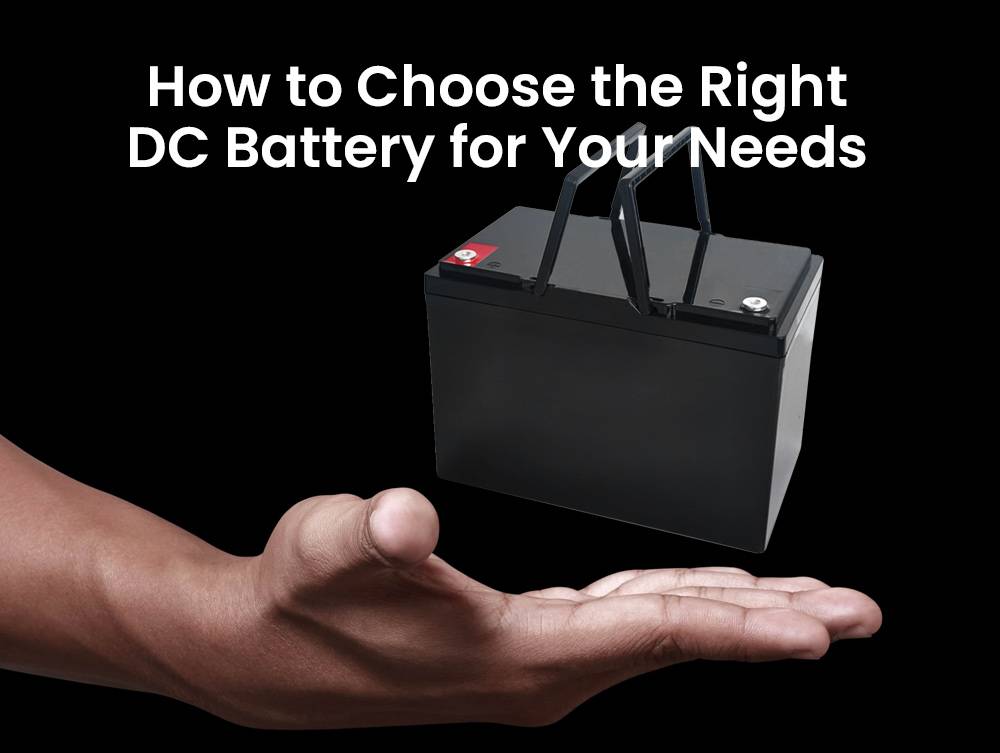
When selecting the right DC battery, several factors come into play.
Firstly, determine the voltage requirements of your application, as DC batteries are available in various voltages. Consider the battery’s capacity, measured in ampere-hours (Ah), ensuring it can meet your power demands over time. Choose the type of DC battery that aligns with your needs, weighing factors like cost, lifespan, and performance. Assess the battery’s cycle life to ensure it can withstand frequent charge-discharge cycles without significant degradation. Additionally, consider practical aspects such as size, weight, and maintenance requirements relevant to your application. Finally, balance budget constraints with long-term durability and performance when making your selection.
By carefully considering these factors, you can confidently choose the right DC battery tailored to your specific requirements.
Maintenance and Care Tips for DC Batteries
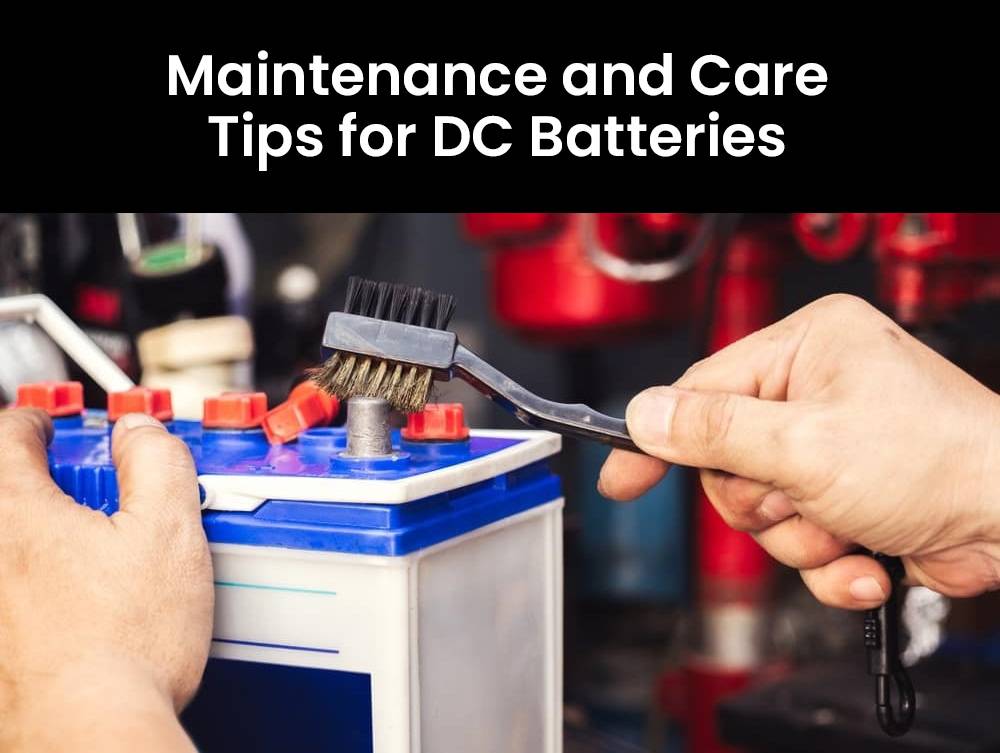
Proper maintenance and care are essential for maximizing the performance and longevity of your DC batteries. Regular inspection is crucial to identify any signs of damage, corrosion, or loose connections. Promptly address any issues to prevent further damage.
Keep your batteries clean by regularly wiping them with a damp cloth to remove dirt and dust that can compromise their performance.
Store your DC batteries in a cool, dry environment to avoid exposure to extreme temperatures, which can negatively impact battery life.
Follow the manufacturer’s guidelines for proper charging to ensure optimal results and avoid overcharging or undercharging.
When not in use for an extended period, store your batteries in a cool place with around 50% charge remaining to prevent self-discharge and minimize stress on the cells.
By adhering to these maintenance and care tips, you can maximize the efficiency and lifespan of your DC batteries, ensuring reliable performance over time.
Common Myths About DC Batteries Debunked
Let’s debunk some common myths surrounding DC batteries to provide clarity on their functionality and care:
Myth 1: DC batteries lose charge quickly. While all batteries inevitably lose charge over time, the rate of discharge varies based on factors like type, usage, and maintenance. With proper care and regular charging, DC batteries can retain their charge for extended periods.
Myth 2: Fully discharging a DC battery before recharging is beneficial. Contrary to belief, fully discharging a battery before recharging isn’t necessary and can actually harm its lifespan. It’s recommended to recharge when the battery reaches 20-30% capacity to optimize longevity.
Myth 3: Leaving a device plugged in after full charge damages the battery. Modern devices are equipped with safeguards to prevent overcharging. Once fully charged, power bypasses the battery, safeguarding against damage from prolonged charging.
Myth 4: Extreme temperature storage prolongs battery life. Storing DC batteries in extreme temperatures can actually hasten deterioration and diminish performance. Optimal storage involves cool, dry environments to preserve battery integrity.
By dispelling these myths, it’s clear that understanding DC battery nuances is essential for optimal usage and maintenance. Research and adherence to manufacturer guidelines ensure effective care practices.
Innovative Uses of DC Batteries in Today’s World
Innovative uses of DC batteries have expanded far beyond their traditional role in powering small electronic devices. Advancements in technology have propelled these versatile energy storage solutions into various industries, driving progress and sustainability.
Renewable energy systems benefit significantly from DC batteries, which store surplus solar or wind-generated electricity for later use, reducing reliance on traditional grid power and advancing green energy initiatives.
Electric vehicles (EVs) rely on high-capacity DC battery packs for efficient operation, enabling longer travel distances without frequent recharging, thus accelerating the transition to sustainable transportation.
In remote and off-grid locations, DC batteries power essential infrastructure such as weather stations, communication towers, and disaster relief efforts, ensuring uninterrupted operation where traditional power sources are scarce.
The integration of DC battery technology into smart homes and buildings enables homeowners to harness stored energy during off-peak hours, reducing reliance on grid-supplied electricity and enhancing energy management.
In the medical field, portable equipment like defibrillators and patient monitors relies on lightweight yet powerful DC battery packs for uninterrupted operation during critical situations, improving patient care and mobility.
Entertainment industries utilize DC batteries in portable sound systems, outdoor lighting setups, film production equipment, and wearable tech gadgets, facilitating immersive experiences and on-the-go creativity.
Ongoing research promises advancements in DC battery technology, aiming for improved efficiency, longer lifespan, and enhanced safety features against overheating or short circuits, paving the way for further innovation and progress.
The Future of DC Batteries: Potential Developments and Improvements
The future of DC batteries is ripe with potential for remarkable advancements and enhancements. As technological progress accelerates, the demand for more efficient and sustainable energy storage solutions continues to grow.
One promising avenue of development lies in the advancement of high-capacity lithium-ion DC batteries. These batteries have already revolutionized the electric vehicle industry, offering extended range and faster charging. Yet, ongoing research aims to further enhance their performance and capabilities.
Another exciting frontier is the integration of nanotechnology into DC battery design. By incorporating nanomaterials into battery electrodes, scientists seek to boost energy density while simultaneously reducing weight and size. This breakthrough could lead to smaller, lighter electronic devices with significantly prolonged battery life.
Moreover, the rise of renewable energy technologies underscores the importance of improved energy storage systems. With solar and wind power becoming increasingly prevalent, there is a growing need for DC batteries capable of efficiently storing large amounts of energy generated from these sources.
Furthermore, there’s a concerted effort to make DC batteries more environmentally sustainable. This involves utilizing eco-friendly materials and refining recycling processes to minimize environmental impact. Such initiatives align with global endeavors to mitigate carbon emissions and combat climate change.
The future holds immense promise for DC batteries, with ongoing research and innovation driving improvements in performance, efficiency, and sustainability. These advancements will not only benefit industries like transportation and electronics but also contribute significantly to a cleaner and more sustainable world.
FAQs
What voltage is too low for a 12 volt deep cycle battery?
A voltage of around 10.5 volts or lower is considered too low for a 12-volt deep cycle battery. At this voltage level, the battery is considered deeply discharged, and further discharging may cause damage or reduce its lifespan.
How are DC batteries rated?
DC batteries, including deep cycle batteries, are typically rated in terms of their voltage, capacity (amp-hours or watt-hours), and sometimes their maximum discharge rate (C-rating). These ratings help users understand the battery’s performance characteristics and suitability for specific applications.
How do you tell if a deep cycle battery is fully charged?
Several methods can be used to determine if a deep cycle battery is fully charged, including:
- Measuring the voltage: A fully charged deep cycle battery typically reads around 12.6 to 12.8 volts for a 12-volt battery.
- Specific gravity test (for flooded lead-acid batteries): Checking the specific gravity of the electrolyte using a hydrometer can indicate the state of charge.
- Battery charger indicator: Many battery chargers have indicators that show when the battery is fully charged.
Do DC to DC chargers get hot?
DC to DC chargers may generate some heat during operation, especially under heavy load or high ambient temperatures. However, modern DC to DC chargers are designed with thermal management features to dissipate heat effectively and maintain safe operating temperatures.
Do DC to DC chargers drain the main battery?
DC to DC chargers typically do not drain the main battery when the vehicle is not running. However, some models may have a minimal standby current draw to power internal electronics or maintain control circuits. This standby draw is usually low enough not to significantly affect the main battery’s charge.
What is the lifespan of a DC battery?
The lifespan of a DC (deep cycle) battery depends on factors such as usage patterns, maintenance practices, environmental conditions, and battery chemistry. Well-maintained deep cycle batteries can last anywhere from 3 to 10 years or more, with proper care and periodic maintenance.
What size DC to DC charger should I use?
The size of a DC to DC charger depends on factors such as the battery capacity, charging requirements, and the electrical system of the vehicle or application. It’s essential to choose a charger that matches the voltage and current requirements of the battery and can provide sufficient charging power for reliable operation.
What is the maximum voltage in a DC battery?
The maximum voltage of a DC (deep cycle) battery depends on its design and chemistry. For example, a fully charged 12-volt lead-acid battery may have a voltage of around 12.6 to 12.8 volts. Exceeding this voltage, especially under charging conditions, can lead to overcharging and potential damage to the battery.
How much DC voltage can shock you?
The voltage required to cause an electric shock depends on various factors such as the current flow, duration of exposure, and individual susceptibility. In general, DC voltages above 30 volts can potentially be hazardous and cause electric shock, especially if the current flow is sufficient to overcome the body’s resistance.
Is 48V DC considered high voltage?
A voltage of 48 volts DC is considered relatively high compared to lower voltages commonly found in household electronics or automotive systems. While it may not be considered extremely high voltage in industrial or utility settings, it still poses a risk of electric shock and should be handled with caution and respect for safety precautions.
Four Stages of the Charging Process in PV System Charge Controllers:
- Bulk Charge: Delivers maximum current to the battery until it reaches a set voltage.
- Absorption Charge: Maintains a constant voltage while current gradually decreases as the battery becomes fully charged.
- Float Charge: Reduces voltage to maintain the battery at full charge without overcharging.
- Equalization Charge (if applicable): Applies a controlled overcharge to balance the cells and prevent sulfate buildup.
Can PV System Charge Controllers Charge 24-Volt Batteries from a Vehicle? No, PV system charge controllers are typically designed to work with solar panels and are usually configured for 12V or 24V systems, not for vehicle batteries directly. Charging 24V batteries from a vehicle would require a specific vehicle-to-battery charger.
Different Current Settings for PV System Charge Controllers Based on Battery Capacity: Current settings vary widely, typically from 5A to over 60A. The appropriate setting depends on the battery’s capacity and the solar panel output, ensuring optimal charging without overloading.
Protection Against Output Short Circuits and Battery Polarity Issues: PV system charge controllers protect against short circuits and battery polarity issues through built-in fuses or circuit breakers, reverse polarity protection, and automatic shutdown features.
Are PV System Charge Controllers Automatic or Manual? Most PV system charge controllers are automatic, adjusting charging stages and voltage levels based on real-time battery conditions. Manual controllers are less common but allow users to set parameters manually.
Types of Charging Algorithms Used by PV System Charge Controllers: Common algorithms include:
- MPPT (Maximum Power Point Tracking): Optimizes solar power output.
- PWM (Pulse Width Modulation): Regulates voltage and current.
- Three-Stage Charging: Includes bulk, absorption, and float stages.
Applications for PV System Charge Controllers: They are used in residential and commercial solar power systems, off-grid installations, remote monitoring stations, and mobile solar setups like RVs and boats.
Types of Batteries PV System Charge Controllers Can Charge: They can charge various types of batteries, including lead-acid (flooded, AGM, gel) and lithium-ion batteries. Some controllers are compatible with specific battery chemistries or require adjustments for different types.
Primary Function of PV System Charge Controllers: The primary function is to regulate the voltage and current from the solar panels to the battery, ensuring efficient charging, preventing overcharging, and protecting both the batteries and the solar array.

